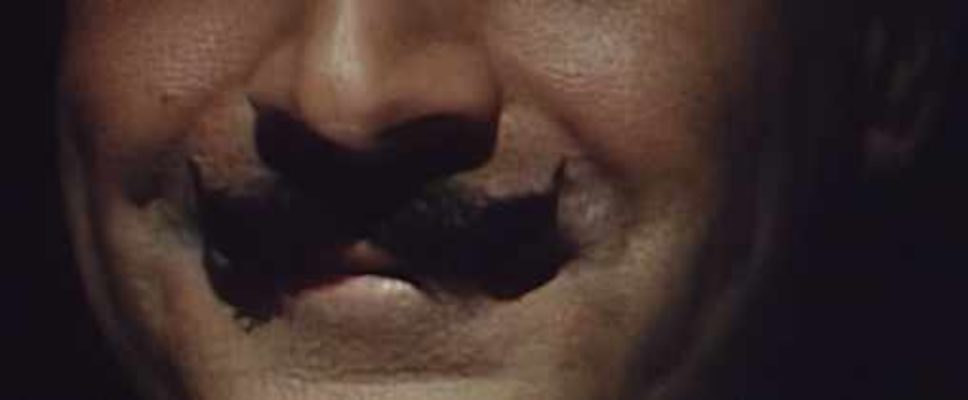Teresa Reviews “The Adventure of the Clapham Cook” (1989): Meet Hercule Poirot
Fidelity to text: 4 1/2 blunt objects.
![]() Everything in the original short story is here, along with added material that enhanced the plot. Dialog from the short story is reproduced verbatim.
Everything in the original short story is here, along with added material that enhanced the plot. Dialog from the short story is reproduced verbatim.
Quality of movie on its own: 4 1/2 blunt objects.
![]() I loved it. This was a terrific start to a terrific series.
I loved it. This was a terrific start to a terrific series.
Let’s start with my using blunt objects as the murder weapon. I don’t actually know how the victim was killed but since the murderer wasn’t a professional and we aren’t told any other details, I’ll assume a candlestick in the boarding house room. Few of us keep pistols around, apothecaries make you sign the poison book, garroting is up-close and personal and thus not often used by amateurs, and knives tend to leave blood spatters, alerting the landlady and the police to a possible crime. After this, I hope to be more accurate as to cause of death.
Hercule Poirot has been filmed many times for the movies, television, stage and radio. With this series, ITV — although they didn’t know it at the time — made history. They eventually filmed virtually every novel and short story that Agatha wrote about Poirot.
Virtually all of them. Think of that! Starting in 1989 when this first episode aired, and ending in 2013, there are thirteen series with seventy episodes in all. That’s a lot of Poirot, and all performed by David Suchet.
Before this episode, I’d watched two Poirots and that was a long time ago. This version of Poirot was relatively new and fresh for me. I didn’t have many preconceived notions. Thus, I can answer the most important question you’ll have.
Did The Adventure of the Clapham Cook provide a good introduction to David Suchet, Hercule Poirot, and the series as a whole?
Yes, it absolutely did. We’ll start with the setting. ITV Productions decided to set all the episodes in the mid-1930s (say 1934 to 1936). Poirot himself spans from 1920 to 1975 (55 years!). It makes sense to stick to one time period for ease of filming. The 1930s have a wonderful Art Deco look and ITV productions takes full advantage of the esthetics of the period.

Never going past 1936 also lets ITV Productions avoid any mention of the slowly escalating troubles in Europe. I expect some foreboding here and there about wicked political machinations, but nothing more than that. Remember that Poirot, Belgian refugee from World War I, may not want to speculate about the possibility of another world war. No one did. The last terrible war to end all wars was still fresh and raw in too many people’s memories.
We’re introduced to Poirot and immediately get a feel for his attitudes, mannerisms, obsessiveness over detail, and love for order. We meet Capt. Arthur Hastings, the sidekick. Captain Hastings is bluff and rather stupid, a good foil for Poirot. We meet Poirot’s personal secretary and assistant, Miss Lemon. She’s much better looking in the TV show than she is in the books, but that’s show business. We also meet Inspector Japp, Scotland Yard, who’ll work with Poirot frequently. Inspector Japp develops a deep respect for Poirot’s little gray cells.

Two other semi-regulars from the novels don’t appear, but they will: Georges, Poirot’s valet, and Ariadne Oliver, his mystery-writing friend.
The film is 51 minutes long and uses every one of them to establish England in the early 1930s. Poirot’s London apartment building is a showpiece of Art Deco architecture. Mrs. Todd’s house is respectable but not rich.



David Suchet was perfect as Poirot. This was his very first outing, and it will be fascinating to see if he changes anything in his performance. I can understand why so many people say he’s the definitive Hercule Poirot like Joan Hickson is the definitive Miss Marple. According to Suchet’s memoirs, he studied Poirot, carefully absorbing every word Agatha wrote about him and keeping track of every bit of description, personal mannerisms, and little quirks so he could more completely become Poirot.
The mystery worked, too; a perfect demonstration that something insignificant can be far more important than anyone would guess. A minor incident — a cook disappearing suddenly — points to a much larger crime. It is, as Poirot himself says, a reminder to never disregard the trivial or undignified.
Already we see Poirot being as foreign as he needs to be to ferret out facts. He flatters maids and railway clerks to get information. He pays close attention to what his eyes tell him. He’s willing to admit when he makes a mistake, and then captures the escaping murderer when he realizes the mistake the railway clerk made.
Everything we need to know about Hercule Poirot, right down to his obsession with orderliness when he has Miss Lemon adjust the position of a nail by one centimeter, is on display.
If ITV Productions can maintain this level of quality, it will be a pleasure to watch the remaining 69 episodes. I can certainly recommend this one.

Finally, a word from our sponsor!

